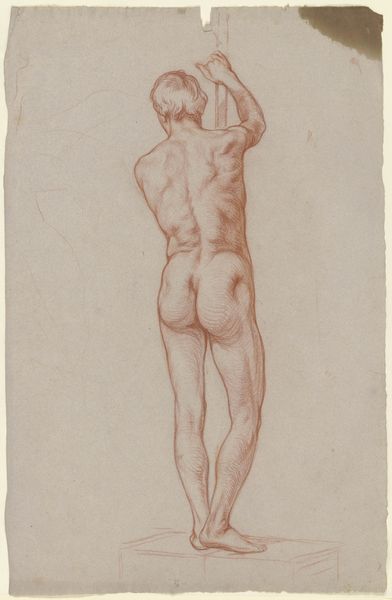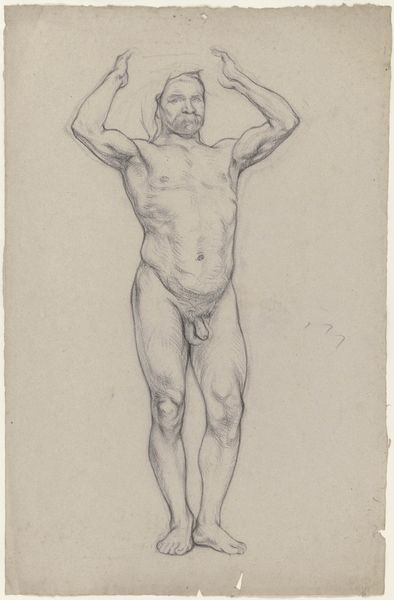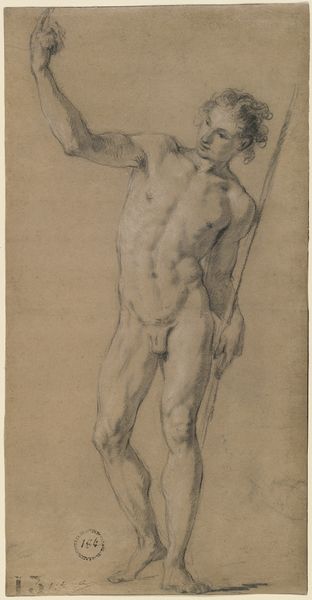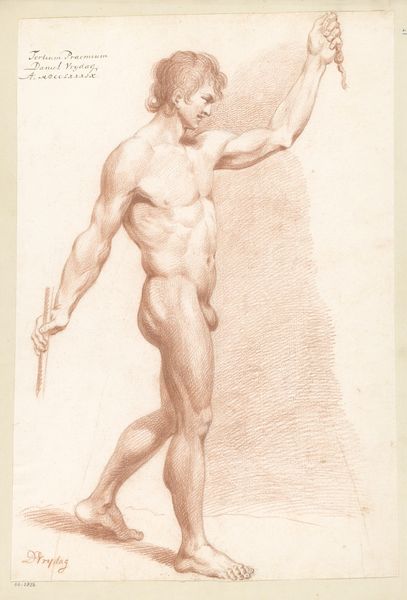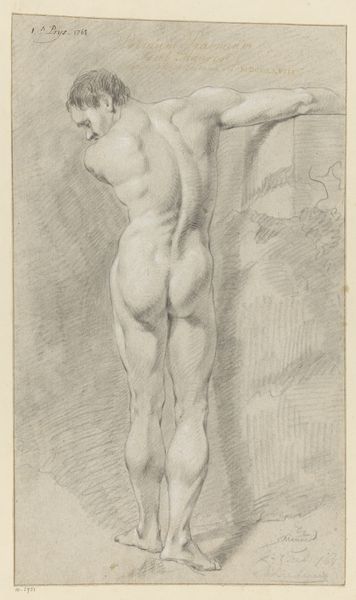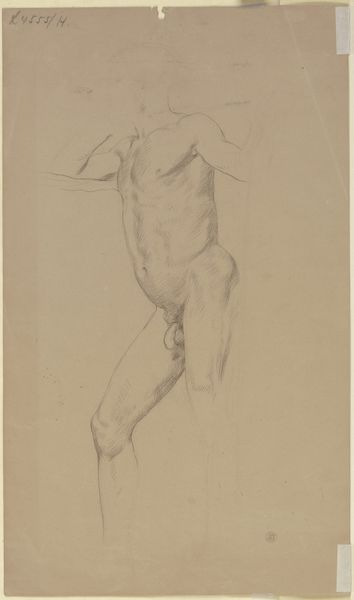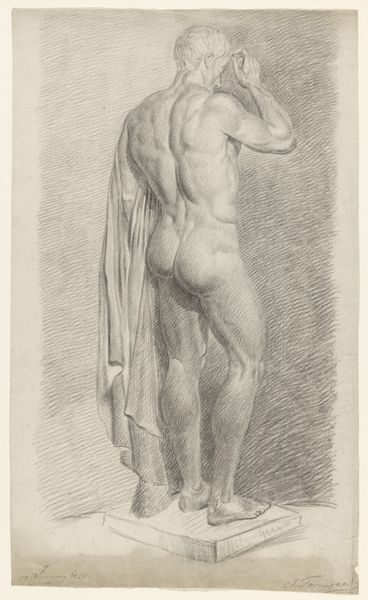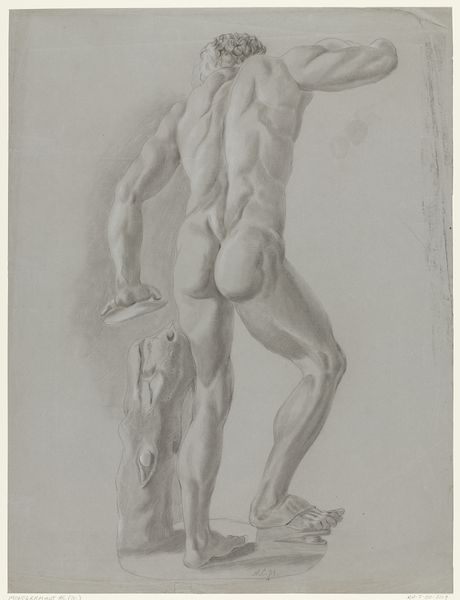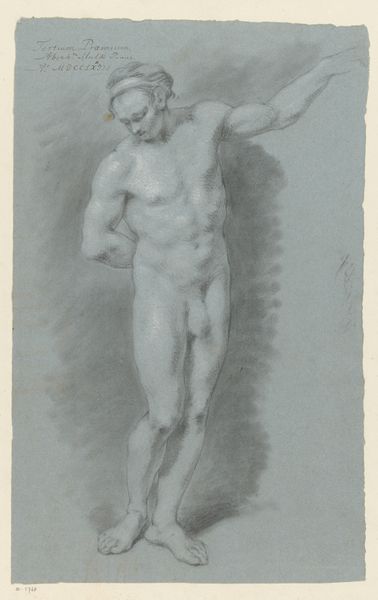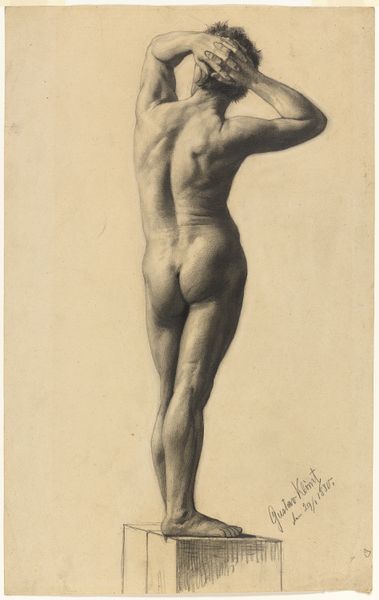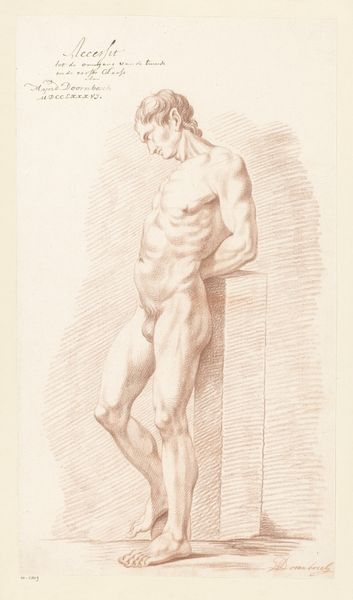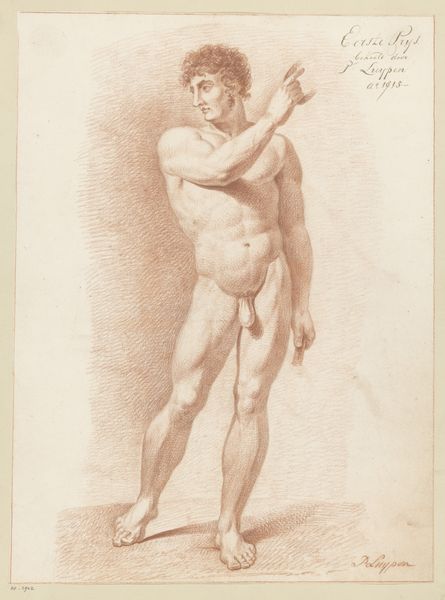
#
amateur sketch
#
toned paper
#
light pencil work
#
pencil sketch
#
charcoal drawing
#
charcoal art
#
pencil drawing
#
ink drawing experimentation
#
underpainting
#
portrait drawing
Dimensions: height 563 mm, width 363 mm
Copyright: Rijks Museum: Open Domain
Editor: We're looking at a drawing called "Staand mannelijk naakt, op de rug gezien," which translates to "Standing Male Nude, Seen from the Back." It was created around 1840-1841. What strikes me is the detail in the musculature, particularly considering it’s a drawing, possibly a study. How do you interpret this work? Curator: This drawing offers a glimpse into the academic practices of the time. The detailed anatomical rendering signals a dedication to classical ideals, a characteristic particularly present during the 19th century in European academies. Notice the use of toned paper - it served as a middle ground from which artists could build highlights and shadows. Who do you think was this art for, considering these stylistic components? Editor: Well, given the focus on classical ideals and anatomy, I'd guess it might be intended for art students as a model for study, or perhaps even as a demonstration piece by an instructor? Curator: Exactly. Its didactic purpose shapes our understanding of its creation and reception. Consider the societal context, particularly within artistic circles. The detailed rendering of the male form reflects a sustained engagement with traditions of male artistic prowess. This isn't simply a nude figure; it’s about asserting certain societal ideals through art. Editor: So, it's not just about the skill but also about upholding certain artistic and societal values? Curator: Precisely! It reveals how art academies were involved in not just artistic skill building, but how artistic power operated institutionally through particular modes of visual expression, reinforcing status. What do you think about it, after all of this information? Editor: I see how much more there is to it. I had just thought of it as a nice drawing! I can really see its historical and cultural context. Curator: Me too! Considering it from a point of the context brings light into details that the eye might not notice at first.
Comments
No comments
Be the first to comment and join the conversation on the ultimate creative platform.
